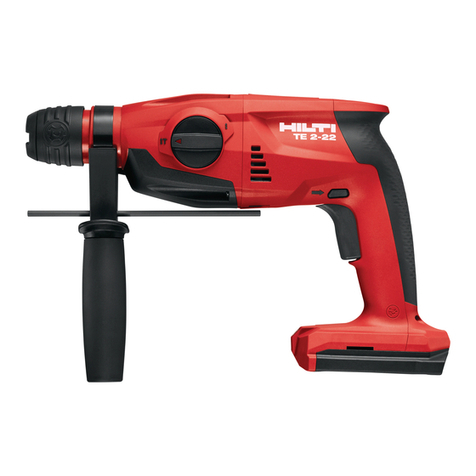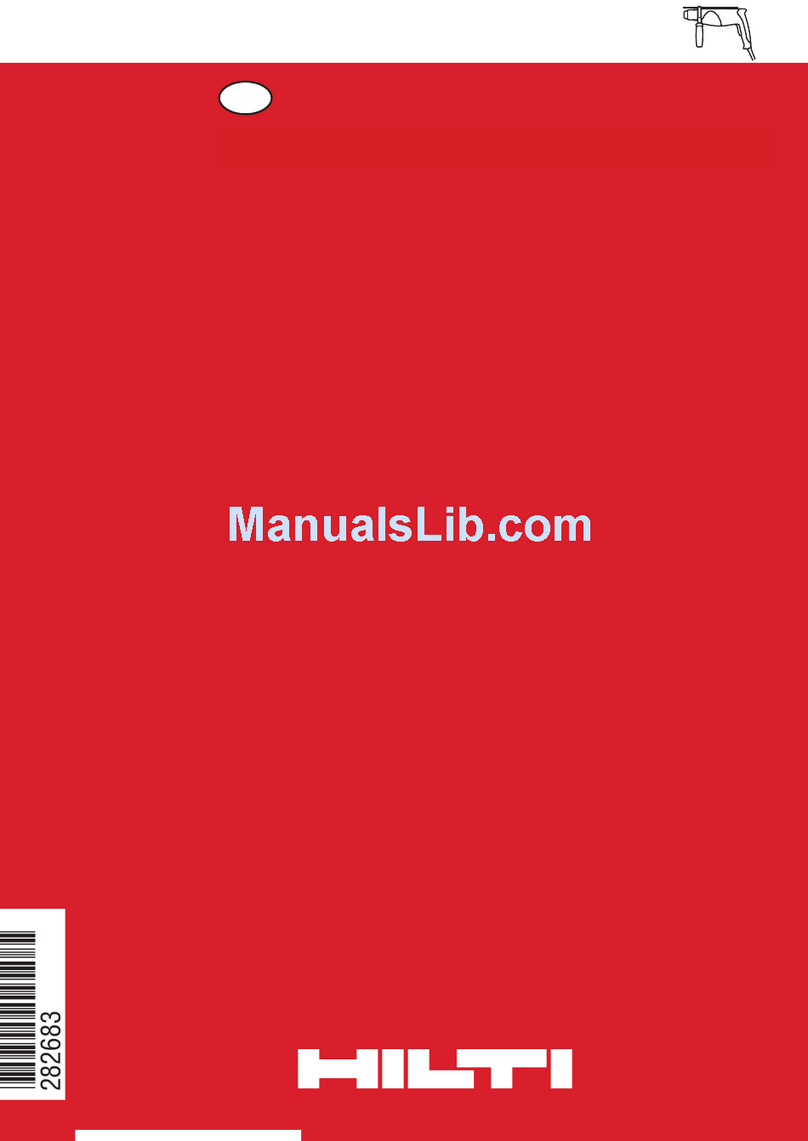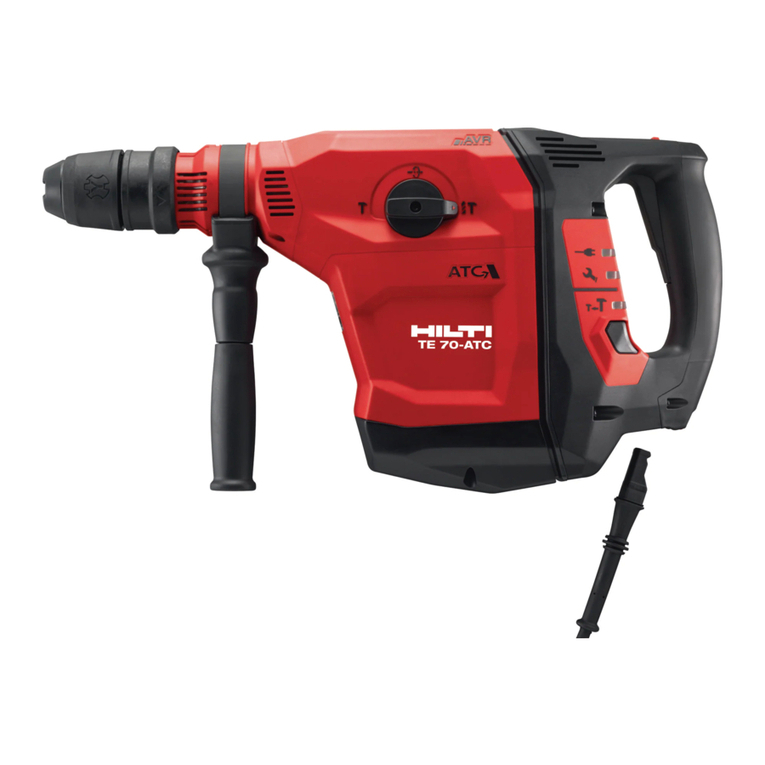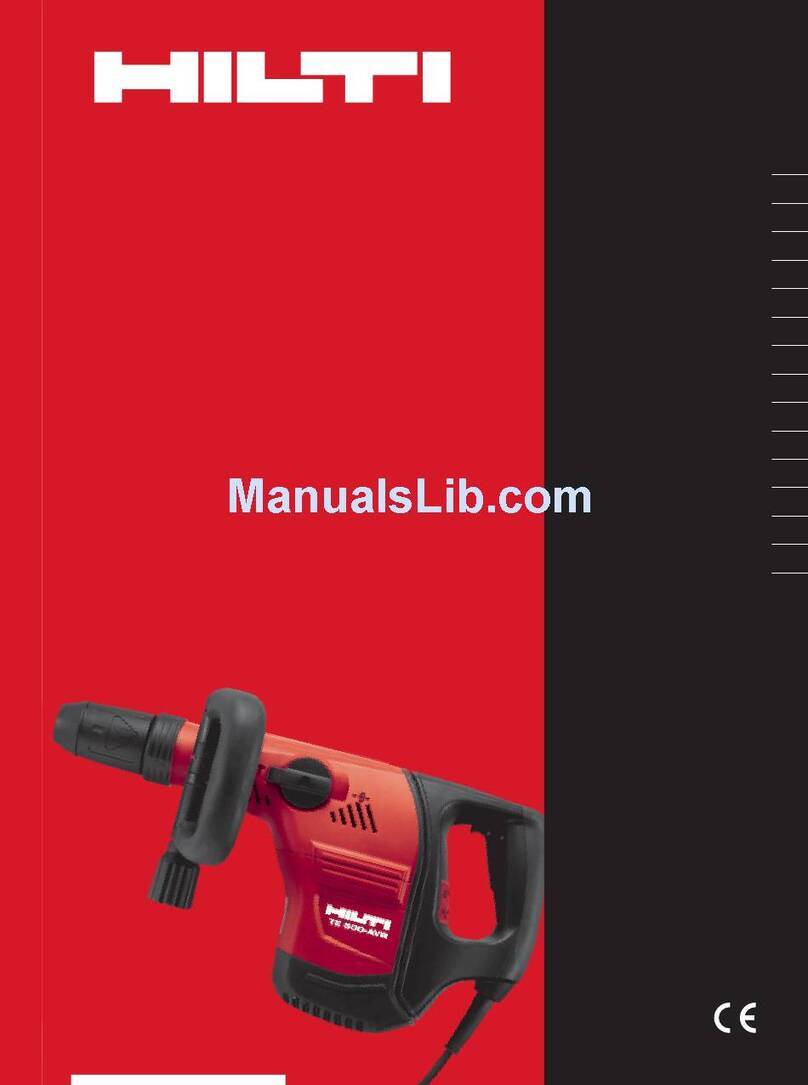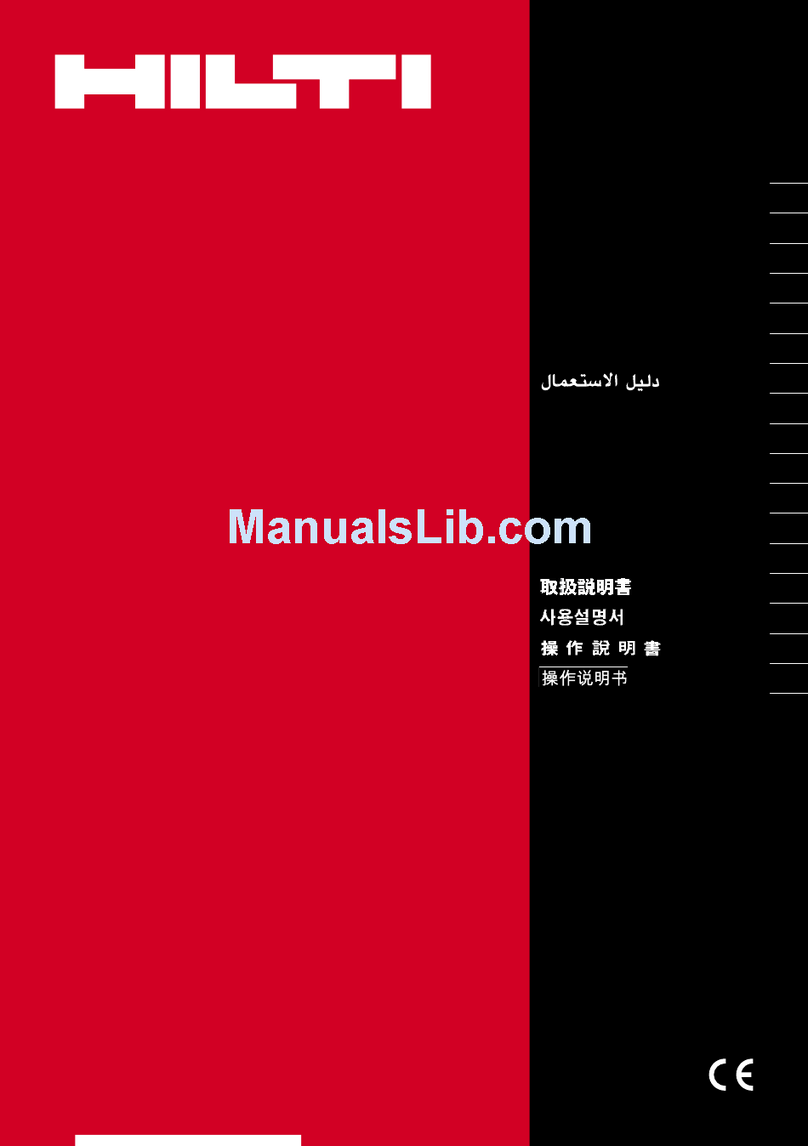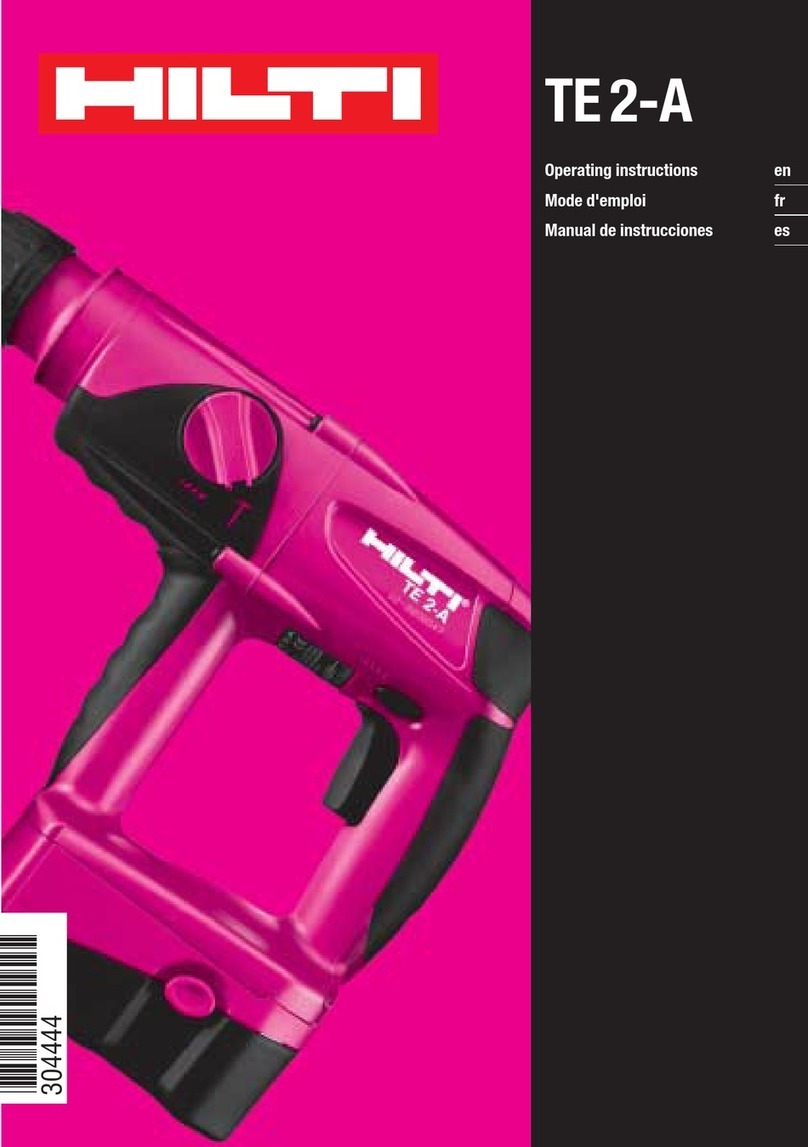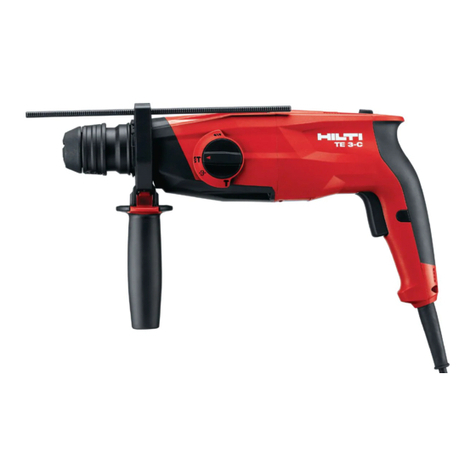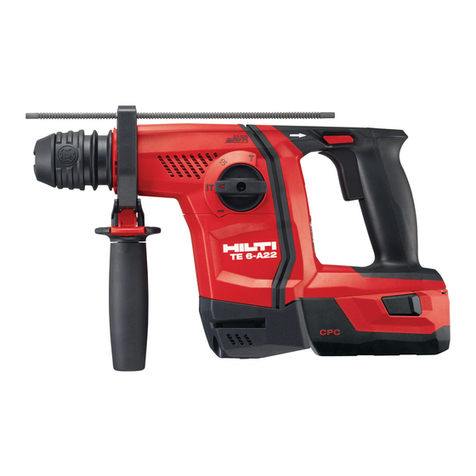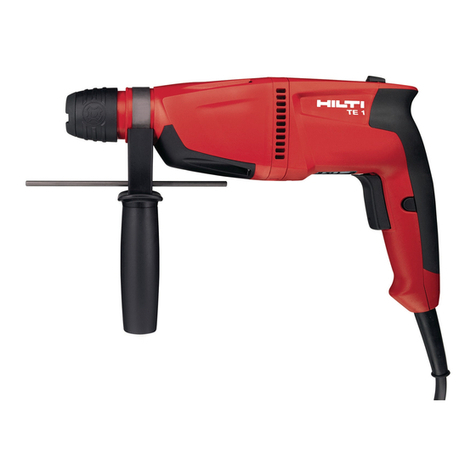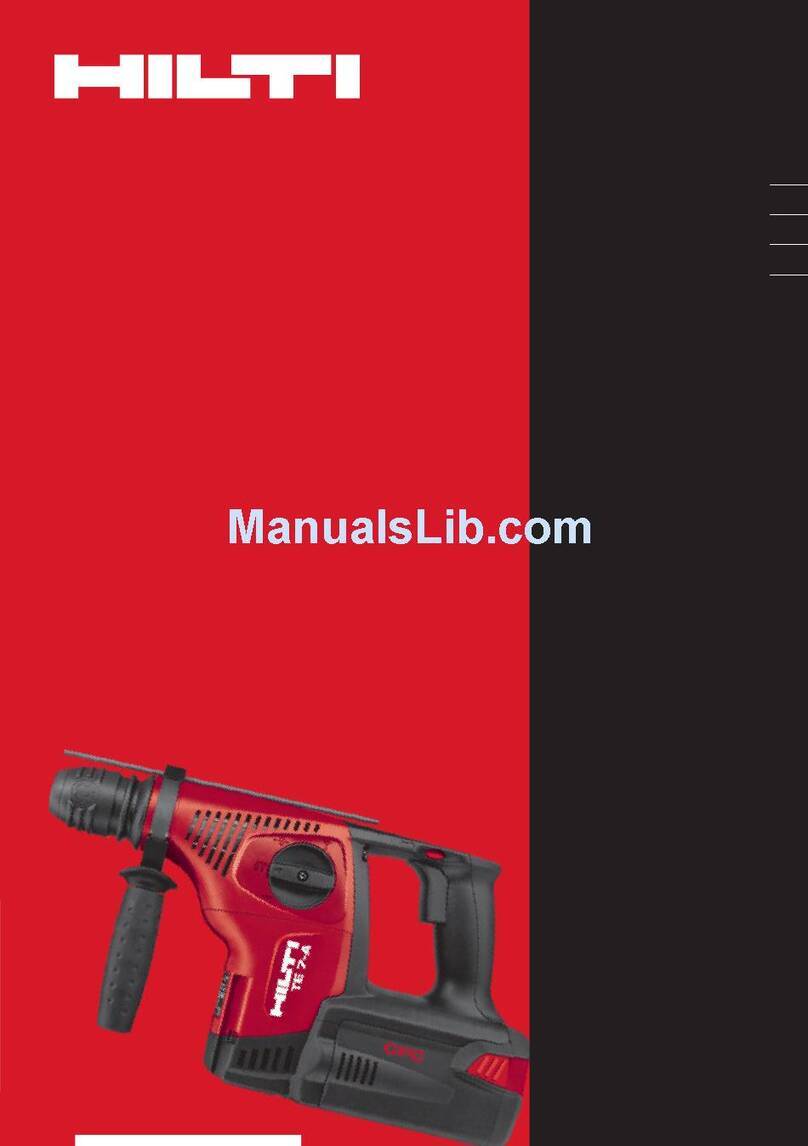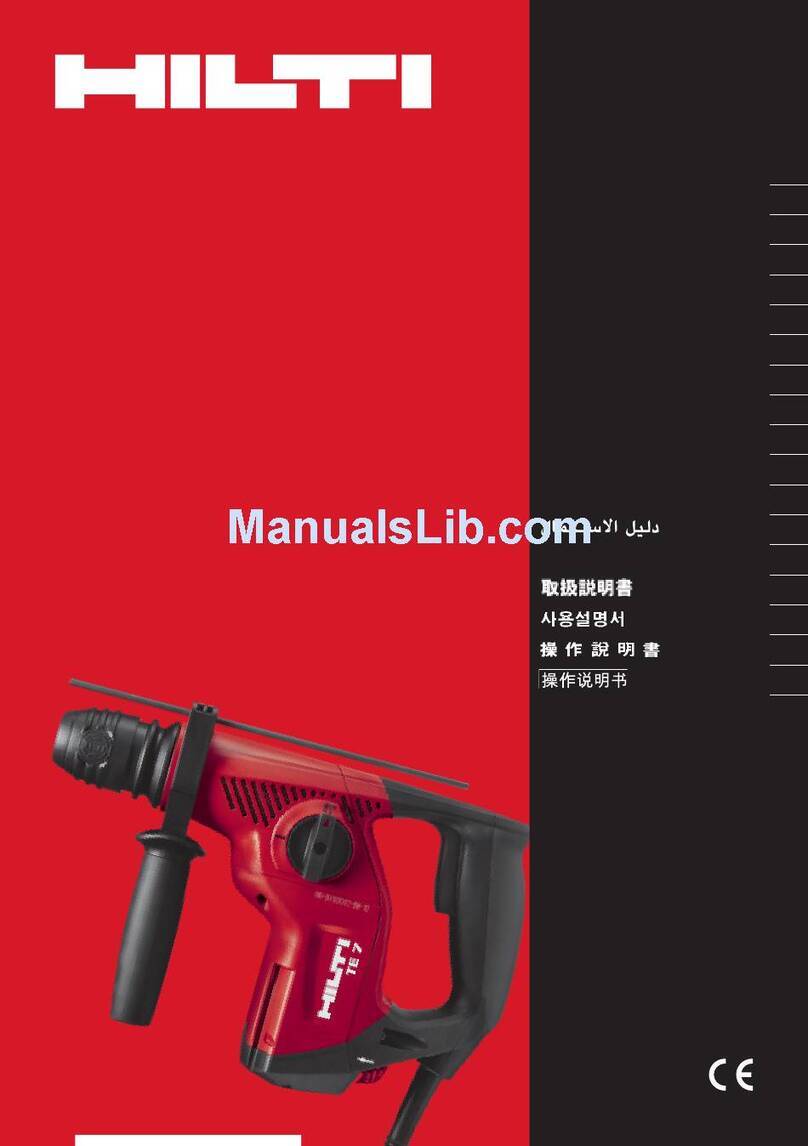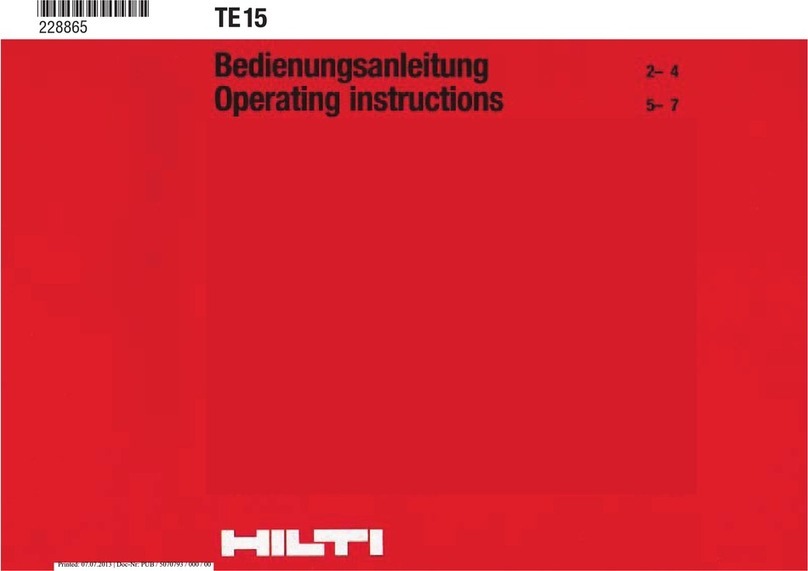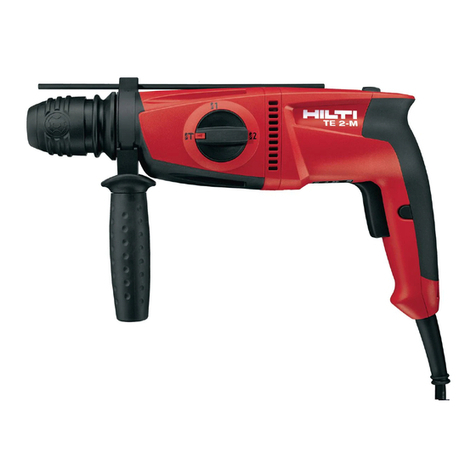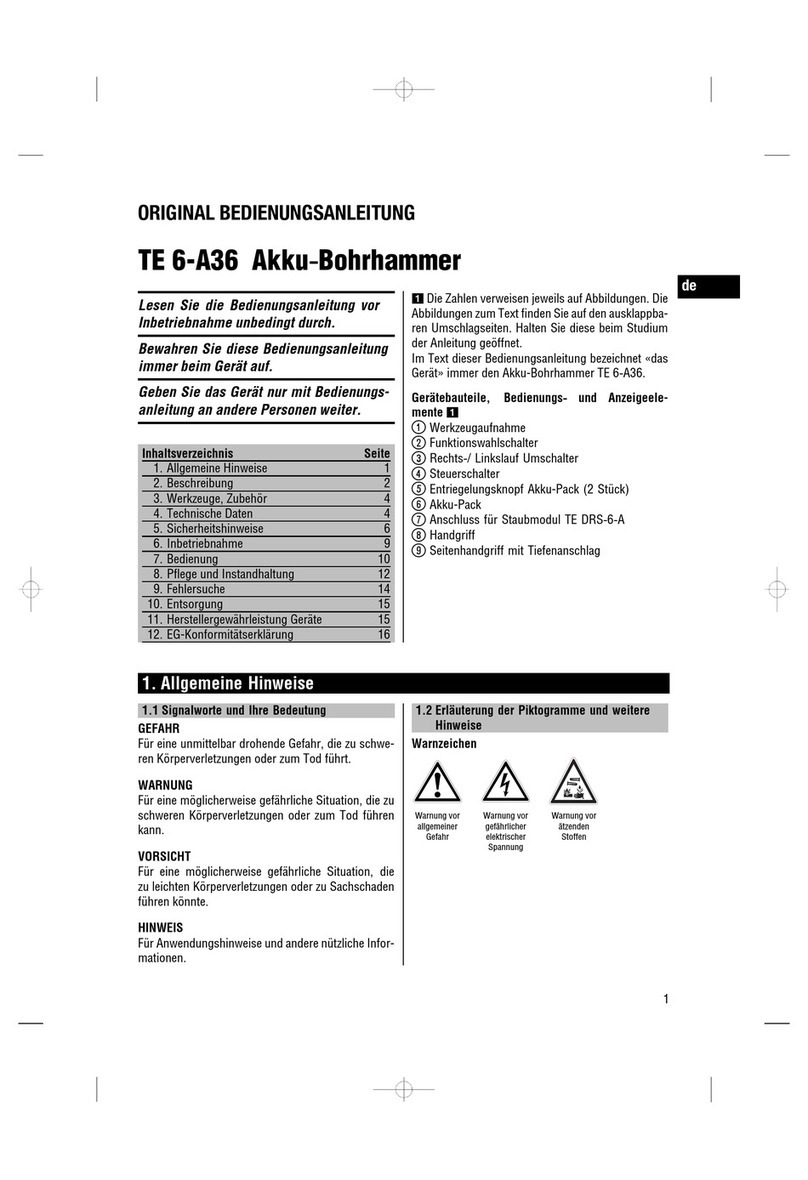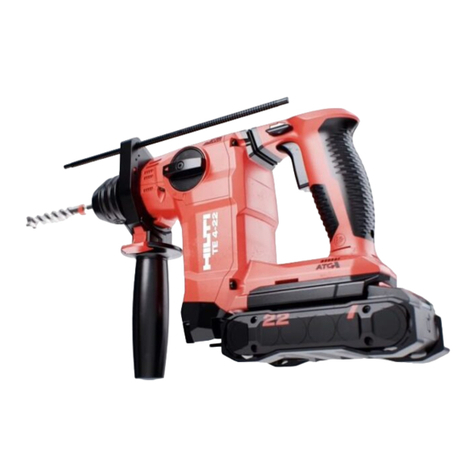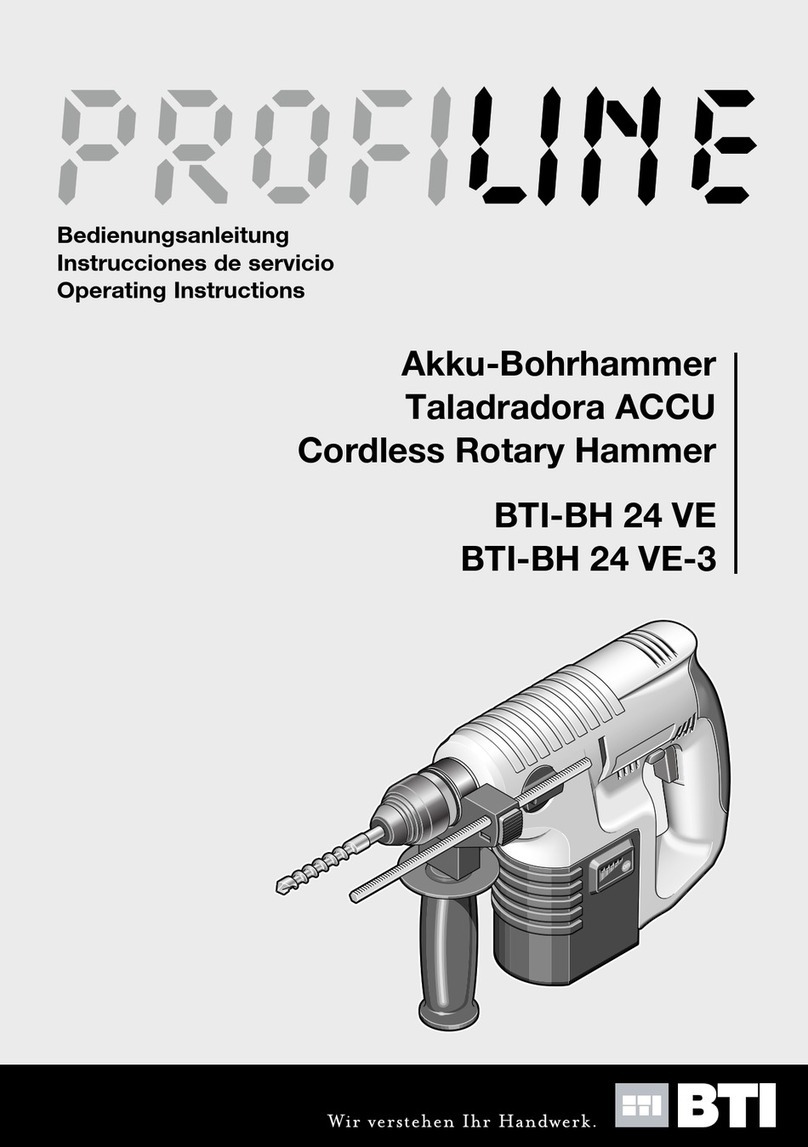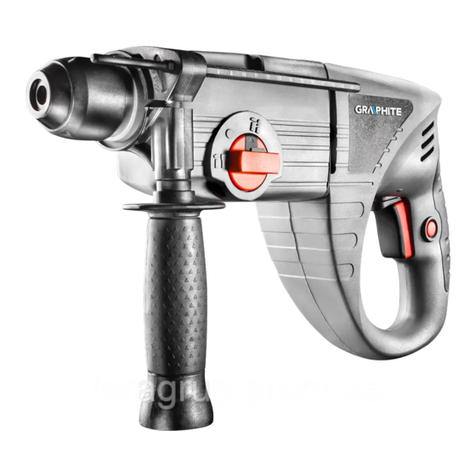
English 5
2.3 Additional safety instructions for breakers
Personal safety
▶Use the product only when it is in technically faultless condition.
▶Never tamper with or modify the tool in any way.
▶Use the auxiliary grip supplied with the tool. Loss of control can cause
personal injury.
▶Apply appropriate safety measures at the opposite side of the workpiece
in work that involves breaking through. Parts breaking away could fall out
and / or fall down causing injury to other persons.
▶Always hold the power tool with both hands on the grips provided. Keep
the grips clean and dry.
▶Hold the power tool by the insulated gripping surfaces when performing
work in which the accessory tool might come into contact with concealed
wiring. If the accessory tool comes into contact with a live wire, metal
parts of the power tool can also become live, resulting in an electric
shock.
▶Wear suitable protective glasses, a hard hat, ear protection, protective
gloves and light respiratory protection while using the tool.
▶Wear protective gloves also when changing the accessory tool. Touching
the accessory tool presents a risk of injury (cuts or burns).
▶Wear eye protection. Flying fragments present a risk of injury to the body
and eyes.
▶Before starting work, check the hazard class of the dust that will be pro-
duced when working. Use an industrial vacuum cleaner with an officially
approved protection class in compliance with the locally applicable dust
protection regulations. Dust from materials such as lead-based paint,
certain types of wood and concrete/masonry/stone containing quartz,
minerals or metal can be harmful to health.
▶Make sure that the workplace is well ventilated and, where necessary,
wear a respirator appropriate for the type of dust generated. Contact with
or inhalation of the dust may cause allergic reactions and/or respiratory
or other diseases to the operator or bystanders. Certain kinds of dust
are classified as carcinogenic such as oak and beech dust, especially
in conjunction with additives for wood conditioning (chromate, wood
preservative). Material containing asbestos may be handled only by
specialists.
▶Take breaks between working and do physical exercises to improve the
blood circulation in your fingers. Exposure to vibration during long periods
of work can lead to disorders of the blood vessels and nervous system in
the fingers, hands and wrists.
Electrical safety
▶Before beginning work, check the working area for concealed electric
cables or gas and water pipes. External metal parts of the power tool may
Printed: 02.02.2017 | Doc-Nr: PUB / 5070775 / 000 / 03
